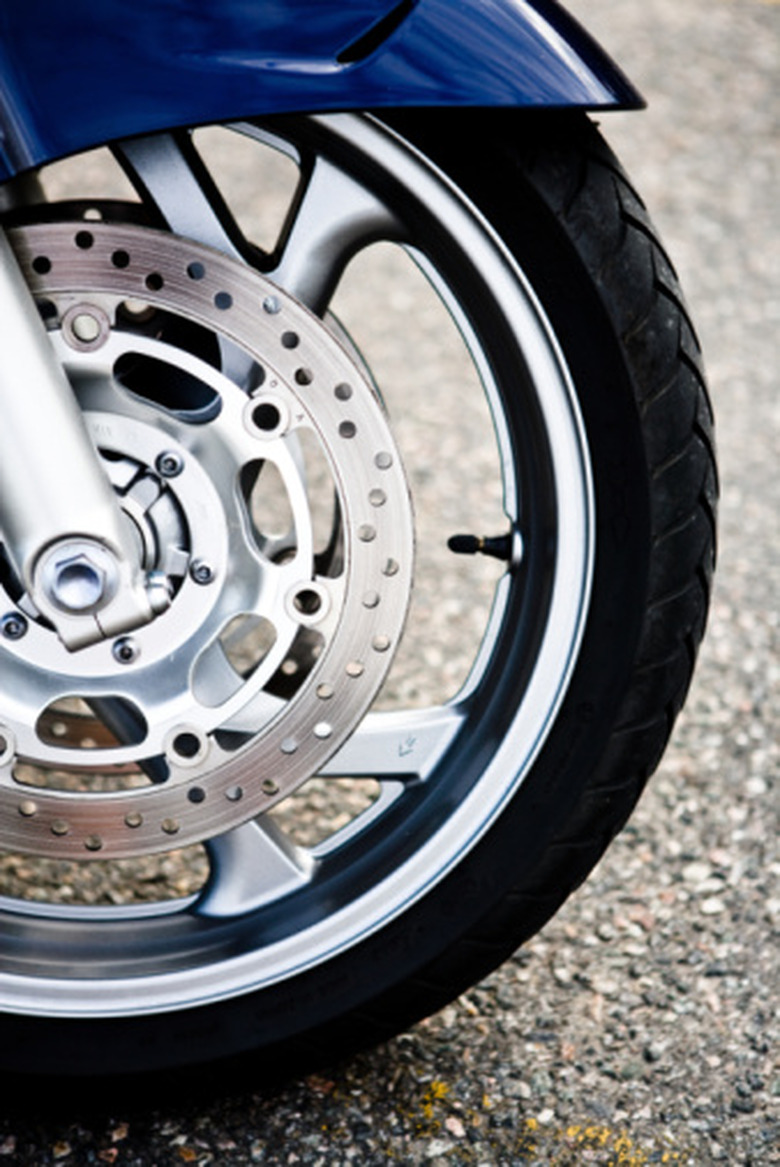How To Electroplate At Home
Electroplating is a huge business considering the number of industries that electroplate their products. Chrome plating is perhaps the most widely known type of plating, but the process produces hazardous waste products. Electroplating is applicable to many metals such as gold, silver, platinum and zinc. Regardless of the type of electroplating, you need to dispose of your waste products properly. The electroplating process requires a battery, a conducting solution that contains ions of the metal you want to plate and something to plate. Zinc plating is one of the easiest types of plating to perform. Follow the example of electroplating a penny with zinc described below.
Step 1
Put on the latex gloves for protection and to keep you skin oils from coating the penny or zinc.
Step 2
Assemble the plating system by arranging a plastic container, a piece of zinc, a penny, two pieces of wire and a 1.5-volt "D" cell battery.
Step 3
Fill the plastic container with vinegar to the halfway mark. This will provide enough vinegar to cover the penny when you place it in the container.
Step 4
Attach one wire to the piece of zinc using an alligator clip. Then insert the zinc into the container of vinegar with the wire sticking out of the container. Vinegar is a weak acid and dissolves the zinc. This generates zinc ions in the vinegar. For electroplating to occur the plating solution must contain metal ions of the metal you want to plate. Allow the zinc to remain in the vinegar for at least 15 minutes before beginning the electroplating.
Step 5
Dissolve five tablespoons of table sugar and 3-1/2 tablespoons of Epsom salts in the container with the vinegar in it. Mix well until the crystals disappear. The Epsom salt makes the solution conductive and the sugar promotes a shiny finish. The sugar is a brightener that inhibits large crystal growth at the cathode during plating and allows even plating over the whole cathode. Use Epsom salt instead of table salt to eliminate the possibility of producing chlorine gas during the plating process.
Step 6
Clean the surface of the penny by brushing it with a toothbrush and a small amount of toothpaste. The surface of the penny should appear shiny after this cleaning.
Step 7
Dip the penny into the container of vinegar. Use an alligator clip to attach the penny to the wire. The only thing remaining to add is the battery to drive the electroplating process.
Step 8
Attach the wire connected to the piece of zinc to the negative post of the "D" cell. Connect the wire holding the penny to the positive post of the "D" cell. The current will begin to flow between the zinc and the penny by the movement of the metal ions and counter ions from the salt. The voltage of the battery is small enough that the plating will occur slowly and more even than with a high voltage battery.
Step 9
Allow the plating to continue for approximately 30 minutes to obtain a heavy layer on the penny.
Step 10
Disconnect the battery from the penny and piece of zinc. Remove the penny from the alligator clip and rinse in water. Polish the zinc coating using a small amount of toothpaste and a toothbrush.
Things Needed
- Latex gloves
- 1-quart plastic container
- Piece of zinc
- Penny
- Two lengths of wire
- 1.5 volt "D" cell battery
- Vinegar
- Alligator clips
- Sugar
- Epsom salt
- Toothbrush
- Toothpaste
TL;DR (Too Long; Didn't Read)
If you want to plate larger pieces, you should increase the size of the battery.
Higher voltage will decrease the time required to plate, but if you go too high, the finish will not look as good.
Warning
Store or dispose of your plating solution properly. The solution contains hazardous materials.
Cite This Article
MLA
Lancaster, Sean. "How To Electroplate At Home" sciencing.com, https://www.sciencing.com/electroplate-home-8074590/. 24 April 2017.
APA
Lancaster, Sean. (2017, April 24). How To Electroplate At Home. sciencing.com. Retrieved from https://www.sciencing.com/electroplate-home-8074590/
Chicago
Lancaster, Sean. How To Electroplate At Home last modified March 24, 2022. https://www.sciencing.com/electroplate-home-8074590/
